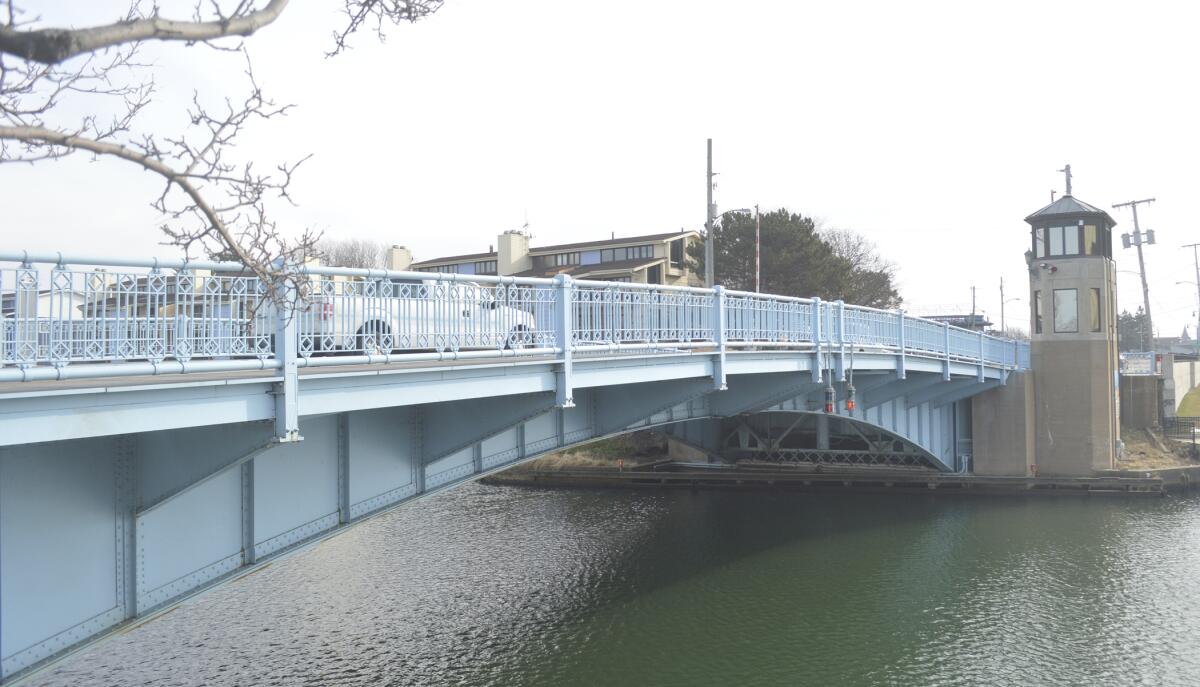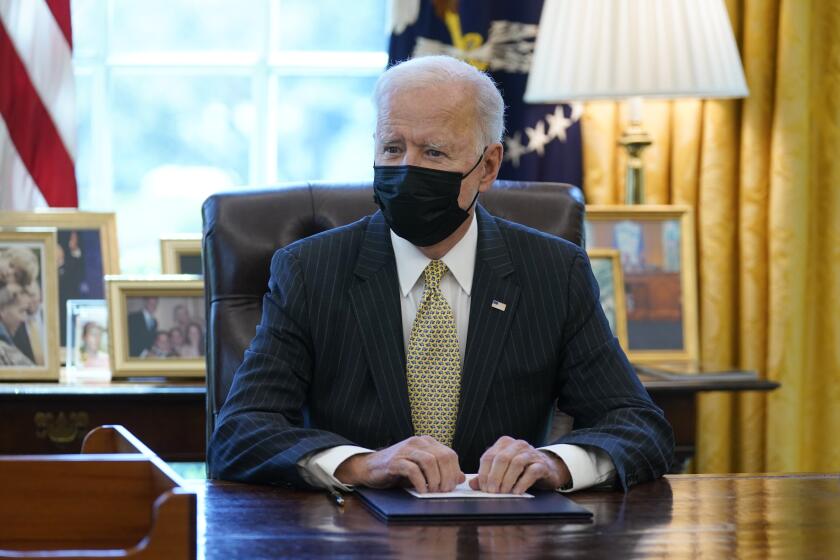Biden’s infrastructure plan: Where does the money go, and where does it come from?

- Share via
President Biden says his proposal for an aggressive series of infrastructure investments would require $2 trillion in spending over eight years but could create millions of jobs. It would be funded by higher corporate taxes.
A closer look at where the money is going and where it’s coming from:
Infrastructure projects
— $115 billion to modernize the bridges, highways and roads that are in the worst shape. The White House outline estimated 20,000 miles of roadways would be repaired, while economically significant bridges and 10,000 smaller bridges would get fixed.
— $85 billion for public transit, doubling the federal government’s commitment in an effort to shorten the repair backlog and expand service.
— $80 billion to modernize Amtrak’s heavily used Northeast Corridor line, address its repair backlog and improve freight rail.
— $174 billion to build 500,000 electric-vehicle charging stations, electrify 20% of school buses and electrify the federal fleet, including U.S. Postal Service vehicles.
— $25 billion to upgrade air travel and airports and $17 billion for waterways and coastal ports.
— $20 billion in redress to communities whose neighborhoods — typically nonwhite — were divided by highway projects.
Federal debt has swelled to levels rarely seen, but shifts in politics and economic concerns mean Biden has relatively few spending constraints.
— $50 billion to improve infrastructure resilience in the aftermath of natural disasters.
— $111 billion to replace lead water pipes and upgrade sewer systems.
— $100 billion to build high-speed broadband that provides 100% coverage for the country.
— $100 billion to upgrade the resilience of the power grid and move to clean electricity, among other power projects.
— $213 billion to produce, preserve and retrofit more than 2 million affordable houses and buildings.
— $100 billion to upgrade and build new schools.
— $18 billion to modernize Veterans Affairs hospitals and clinics, and $10 billion for federal buildings.
— $400 billion to expand long-term care services under Medicaid.
— $180 billion invested in research and development projects.
— $300 billion for manufacturing, including funds for the computer chip sector, improved access to capital and investment in clean energy through federal procurement.
— $100 billion for workforce development.
Tax increases
Biden’s plan would finance projects by:
— Raising the corporate tax rate from 21% to 28%, one of the measures that over 15 years would cover the cost of the infrastructure program and then help to reduce the budget deficit.
— Imposing a 21% global minimum tax, so that companies cannot avoid taxes by shifting income to low-tax countries.
Get our L.A. Times Politics newsletter
The latest news, analysis and insights from our politics team.
You may occasionally receive promotional content from the Los Angeles Times.
— Making it harder for businesses to merge with foreign companies to avoid U.S. taxes, a process known as inversion.
— Eliminating tax breaks for companies that shift assets abroad, and denying deductions for offshoring jobs.
— Imposing a 15% minimum tax on the income that corporations report to shareholders.
— Eliminating tax preferences for the fossil fuels sector.
— Increasing IRS audits of large corporations.
More to Read
Get the L.A. Times Politics newsletter
Deeply reported insights into legislation, politics and policy from Sacramento, Washington and beyond. In your inbox twice per week.
You may occasionally receive promotional content from the Los Angeles Times.











